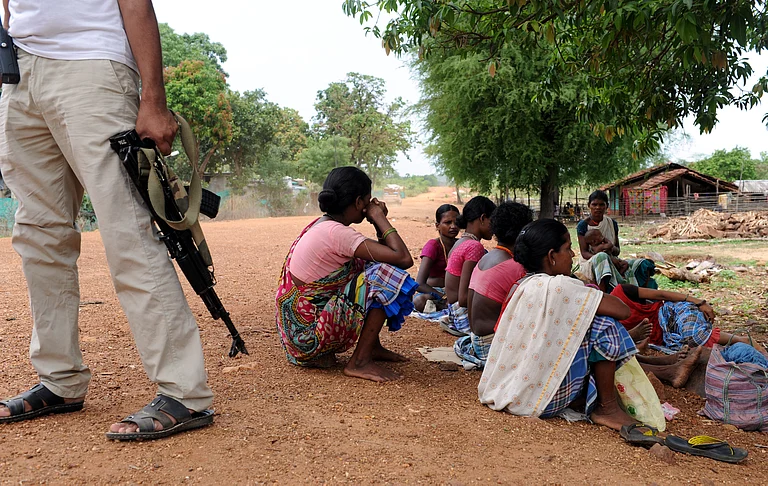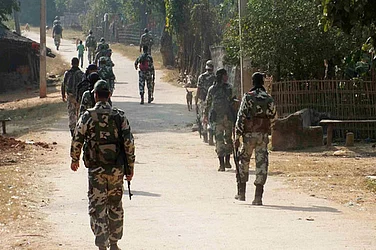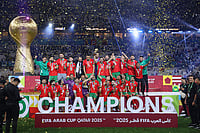In recent years, the growth of private schools in India has been significant, with their share in elementary education increasing from 19.49 per cent in 2007-08 to 28 per cent in 2020. According to Oxfam India, this surge has not resulted in more equitable enrolment patterns, particularly among marginalised communities. Scheduled Tribes (ST) children, with a participation rate of 12.7 per cent, exhibit the lowest involvement in private schooling, followed by kids from the Scheduled Castes (SC) and Other Backward Classes (OBCs). Oxfam’s study indicates that the trend of private school enrolment among Dalit and Adivasi children has been decreasing over time, exacerbating the gap between these groups and Upper Castes. The language of merit, ability and hard work that dominates elite private schools is shaped by class, gender and caste.
Over the years, this pattern has gained momentum, posing a risk of further widening disparity between Dalit and Adivasi communities and Upper Castes. The proliferation of private schools in India has failed to yield more inclusive enrolment trends across gender, caste and class lines. Particularly in rural regions, the surge in private schools and enrolment seems to perpetuate the existing social, economic and demographic norms instead of creating fresh opportunities for India's marginalised communities. While some caste disparities in urban areas may have seen improvement at lower primary levels, there is a lack of consistent backing for private enrolment to become genuinely equitable over time. A market-mediated education system inherently tilts against the socially marginalised, perpetuating skewed access and opportunities. Oxfam India’s report suggests that 37 per cent of children from SCs faced harassment or abuse by either school staff or their peers during the pandemic.
Financial barriers pose a significant challenge to Dalit and Adivasi enrolment in private schools, as the cost of sending even one child to such institutions constitutes a substantial portion of their household income. Sending even one child from the family to a private school will cost 27 per cent and 23.3 per cent of the total income of ST and SC households at the secondary level of education, respectively. Using the family's spending per person as an estimate for income, when the income per person doubles, there's about a 10 per cent higher chance of selecting a private school over a public one. The prevalence of Low Fee Private Schools, often of questionable quality, further raises concerns about the education provided to Dalit and Adivasi students in these settings.
Dalits and Adivasis stand out as some of the most economically disadvantaged groups in India, with 25 per cent and 35 per cent, respectively, falling below the poverty line. Data from the Socio-Economic Caste Census (2011) reveals that in 83.55 per cent of Scheduled Caste (SC) and 86.53 per cent of Scheduled Tribe (ST) households, the highest-earning member earned less than Rs 5,000. In comparison, Dalit and Adivasi households earn 21 per cent and 34 per cent less than the national average annual household income, while Upper Caste households earn nearly 47 per cent more than this average. The financial strain on parents increases due to common educational expenses such as school fees, private tuition, stationery, uniform, books and transportation. This underscores a clear correlation between parental economic status and the type of school a child attends.
Kerala stands out - highest in quality and lowest in dropout rate
The Kerala model of public education presents a different picture. In the 2019 NITI Aayog report evaluating the quality of school education across 20 large states, Kerala has clinched the top spot, showcasing exemplary performance. (On the flip side, Uttar Pradesh, despite being the most populous state, has landed at the bottom of the rankings for the academic year 2016-17).
According to the periodic economic reviews of the Government of Kerala, there is a reverse trend of students going back to government schools over the past five years. Compared to previous years, around 2,56,448 new students sought admissions in government and government-aided schools in Kerala in the academic year 2021-22. The corresponding number for the year 2022-23 is 82,448. (This decline in number is due to the decline in birth rate according to the Govt) Over the past five years 8,16,929 new students have enrolled in government schools. In Kerala too, the percentage of SC and ST students in government schools is higher than that of aided and unaided schools. The percentage of SC students in government schools, government aided schools and private unaided schools are 12.17 per cent, 9.40 per cent, and 3.67 per cent respectively.
Kerala has achieved the distinction of having the lowest dropout rate of school students among the Indian states, both in the general as well as the SC/ST category. In the year 2020-21, dropout ratio among school students in Kerala was 0.04 per cent, as per the Ministry of Human Resources. The dropout ratio of SC and ST students has significantly declined over the years. The drop-out ratio among SC students in Kerala has declined in 2021-22 as 0.04 per cent and that of ST students also declined as 0.30 per cent.
Oxfam India has recommended regulatory measures to address discrimination against Dalits and Adivasis in private schools and emphasised the need to strengthen the public education system by allocating 6 per cent of GDP to education. Despite the growth in private schools, their impact on learning outcomes remains ambiguous, and teacher bias in student evaluations persists. In essence, the privatisation of education threatens to perpetuate social inequalities rather than breaking down existing barriers of class, caste, and gender in Indian society.
Privatisation of Healthcare and its impact on marginalised communities
Oxfam has also highlighted the impact of privatisation of healthcare on India's Dalits and tribals. They experience significantly disparate health outcomes, living shorter lives of lower quality. “A Dalit woman lives, on average fifteen years less than the upper caste Hindu woman. About 65 per cent of ST women suffered from anaemia compared to 47.6 per cent of non-ST women. They miss out on access to healthcare. While 15 per cent of higher caste women did not receive prenatal care, such care was not received by 26 per cent of Dalit women. Only about 61% of ST mothers received the tetanus vaccination, compared to 81 per cent of non-SC/ST women”, states Oxfam’s report.
The dominance of private infrastructure, constituting approximately 62 per cent of India's health infrastructure, necessitates a critical examination of its responsiveness to these communities. Only 4 per cent of Adivasis and 15 per cent of Dalits seek healthcare from private facilities, according to Oxfam India. Notably, the 75th round of NSSO indicates that out-of-pocket expenditure for inpatient care in private facilities is 524 per cent higher than in public facilities. This poses a significant burden, particularly.
Oxfam India finds that despite expectations that health insurance would address the high healthcare costs, only 1.6 per cent and 4 per cent of private hospital admissions under PMJAY were from Dalits and Adivasis, falling significantly short of their projected eligible population share. Moreover, private hospitals, predominantly situated in urban areas, aggravate the existing infrastructure gaps in rural regions inhabited by Adivasi and Dalit populations. Discrimination persists in the private healthcare system, including disparate care, denial of entry, and extended waiting times for Dalits and Adivasis.
The representation of these communities in the leadership of the medical profession is also notably low, and social accountability remains limited in the private sector. Weak regulatory mechanisms and insufficient implementation of key provisions further compound these challenges. The policy brief proposes recommendations to foster equity, accountability, and address the specific concerns of SC and ST communities in the private health sector.


























